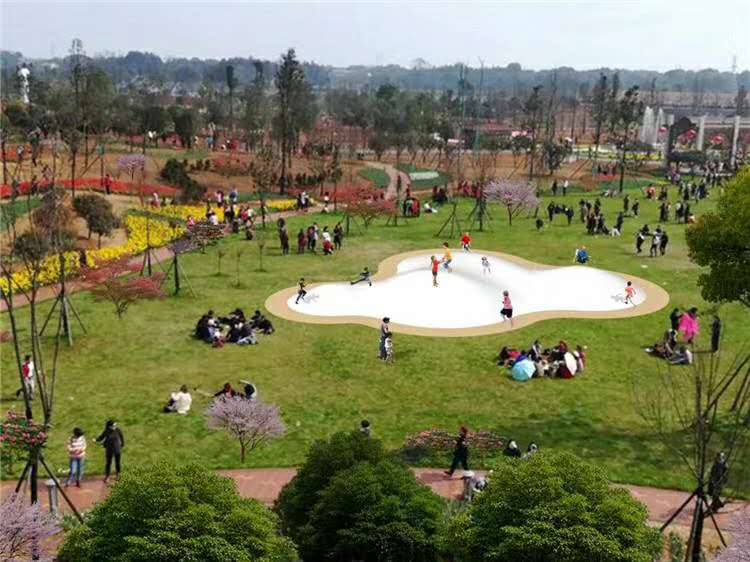Site conditions suitable for the construction of an amusement park
When considering the construction of an amusement park, several site conditions must be taken into account to ensure the success and safety of the project. The following description outlines the key factors and characteristics that make a site suitable for the development of an amusement park.

Size and Topography:
An amusement park requires a considerable amount of space to accommodate various attractions, rides, facilities, and infrastructure. The site should have ample land area, preferably several acres, to allow for expansion and future additions. The topography should be relatively flat or gently sloping to facilitate construction and provide a stable foundation for the rides.
Accessibility and Transportation:
The site should be easily accessible to visitors and employees. It should be located near major highways, airports, or public transportation systems to ensure convenient travel. Sufficient parking facilities and well-planned road networks are necessary to handle the influx of visitors during peak times.
Proximity to Population Centers:
An ideal site for an amusement park is located in close proximity to densely populated areas or tourist destinations. This ensures a large customer base and a high volume of footfall throughout the year, maximizing the park’s potential for success. Additionally, nearby hotels, restaurants, and other amenities can further enhance the visitor experience.
Utilities and Infrastructure:
Adequate utility infrastructure is essential for an amusement park. The site should have access to reliable water and electricity supply, as well as proper sewage and waste management systems. The availability of these utilities will support the operation of the park and ensure a comfortable experience for visitors.
Environmental Considerations:
Environmental factors play a significant role in site selection. The park should be located away from environmentally sensitive areas, such as wetlands, protected habitats, or flood-prone regions. It should comply with local regulations and have a minimal impact on the natural surroundings. Preservation of trees, green spaces, and natural features can also enhance the overall aesthetic appeal of the park.
Safety and Security:
Safety is of paramount importance in amusement park design. The site should have adequate space for emergency exits, first-aid facilities, and evacuation plans. It should be free from potential hazards such as steep cliffs, unstable terrain, or high-risk geological features. Proper security measures, including surveillance systems and trained staff, should be in place to ensure the safety of visitors and prevent unauthorized access.
Market Potential:
Lastly, a thorough market analysis should be conducted to assess the demand for an amusement park in the chosen location. Factors such as local demographics, tourism trends, and competing attractions should be considered to ensure a viable customer base and long-term profitability.
In conclusion, the suitability of a site for the construction of an amusement park depends on various factors such as size, accessibility, infrastructure, safety, environmental considerations, and market potential. A well-chosen site can contribute significantly to the success and popularity of the amusement park, providing visitors with an enjoyable and memorable experience.
